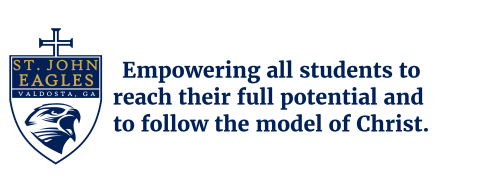
St. John the Evangelist Catholic School is known for the exceptional educational experience we offer to our students. At St. John Catholic School, our dedicated teachers are committed to meeting our mission statement by fostering a nurturing and academically rigorous environment for students in grades Kindergarten-5th.
Our school is founded on Christian principles, and we take pride in instilling Christian virtues and morals in tandem with providing excellent academic instruction. Students at St. John Catholic School are engaged in a comprehensive curriculum, encompassing areas such as mathematics, reading, and English, ensuring they receive the highest quality of education in a Christian atmosphere.
We warmly welcome you to learn more about our school and encourage you to explore the enriching opportunities that St. John the Evangelist Catholic School has to offer your child. Schedule a school tour here.
